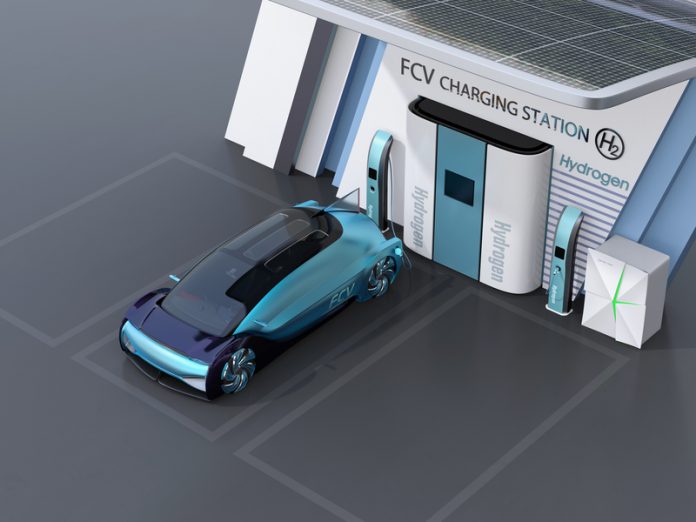Morry Markowitz, President of the Fuel Cell and Hydrogen Energy Association details how policies have been implemented that increase the role of hydrogen in various applications – including transportation as one method reducing carbon emissions
Over the past several years, countries, states and other jurisdictions around the world have implemented policies increasing the role of hydrogen in various applications – transportation, stationary power and energy storage – as one method reducing carbon emissions in these sectors.
However, with the number of hydrogen-powered fuel cell systems already in operation on the road in vehicles and deployed on the ground in stationary systems steadily climbing, with more to come on the horizon, many are asking, “is hydrogen really clean?” The plain and simple answer is yes!
In the transportation sector, there are a lot of misconceptions about hydrogen and its use as a fuel. To understand why governments, industry and consumers are increasingly working to utilise this energy powerhouse to meet environmental goals, we must start with the basics. Fuel cell vehicles, or FCVs, are electric vehicles. However, rather than getting power from the grid to recharge, an FCV generates electricity onboard the vehicle, combining oxygen from the air with stored hydrogen fuel, with the only tailpipe emission being water vapour. FCVs are the only zero-emission vehicle platform now and for the foreseeable future, that replicates today’s drivers’ experience of being able to travel 300-400 miles on a tank of hydrogen fuel and then refuel in just three to five minutes.
Hydrogen is the lightest and most abundant element in the universe, however, as hydrogen is not naturally occurring, it can only be obtained from other sources. The most common methods of hydrogen production are either reforming of conventional hydrocarbons, typically natural gas, or through electrolysis, a process where an electric current is run through water to produce a stream of hydrogen and oxygen.
When using renewable electricity from solar or wind to power electrolysis or renewable biomethane from landfills or wastewater treatment plants, hydrogen production is completely decarbonised. Just as battery electric vehicles are getting cleaner as the utility grid adopts more renewable power generation, so too is hydrogen production driving its emissions lower.
As some critics have pointed out, certain methods of generating hydrogen do produce some greenhouse gas. However, as the overall goal is to reduce harmful emissions in the transportation sector, many studies, including those by the U.S. Department of Energy’s Argonne National Laboratory, have demonstrated that no matter the source of hydrogen, FCVs still dramatically reduce carbon emissions compared to gasoline vehicles. In fact, FCVs are comparable in emissions to battery electric vehicles (BEVs) that use grid electricity.
Another common misunderstanding is the claim that the process of producing hydrogen from natural gas uses more energy than what would be left in the hydrogen generated – meaning it would be more economical to use the natural gas directly as a fuel for an internal combustion engine car. While some energy is lost in reforming natural gas into hydrogen, this argument discounts the extremely inefficient process of combustion engines and does not consider the much higher efficiencies of fuel cell electrochemistry. An FCV using hydrogen derived from natural gas would allow a vehicle to travel two to three times further than a compressed natural gas vehicle using the same amount of fuel. FCVs offer a much more efficient and environmentally friendly means of using domestically produced resources.
The ultimate goal is to completely decarbonise our transportation system. That is why at the Global Climate Action Summit in San Francisco last fall, several of the largest companies in the fuel cell and hydrogen industry announced an ambitious goal to fully decarbonise hydrogen as a transportation fuel by 2030. This goal would set the stage for a significant environmental impact and put hydrogen-fuelled transport on a much faster path to zero-carbon intensity than the one charted by utilities for the grid.
If the policy aim is to transition to a zero-emission transportation sector, BEVs will not be able to do it alone. Utilising quick-fill centralised fueling stations and the long driving range that consumers are used to, not to mention scalability to all vehicle platforms, FCVs offer a ready choice that fills a need, especially for consumers in multi-family housing, city dwellers, or in locations with limited parking options where charging is not available. While BEVs may be a great choice for some consumers, if we want to have the greatest adoption of zero-emission vehicles, we need to expand the portfolio to include FCVs, too. We are doing that now and the pace of change is only growing.
Beyond transportation, thousands of hydrogen fuel cells are also being used today to provide zero-emission stationary power generation for a long list of private and public sector customers across the country and around the world. These fuel cell systems are generating clean, efficient, long-lasting and reliable back-up power for communications networks, utilities, governments, railroad and traffic signals and even microgrids. On-road and off, hydrogen is a clean energy solution that is helping transition to a better future today.
Morry Markowitz
President
Fuel Cell and Hydrogen Energy Association
Tel: +1 202 261 1331











